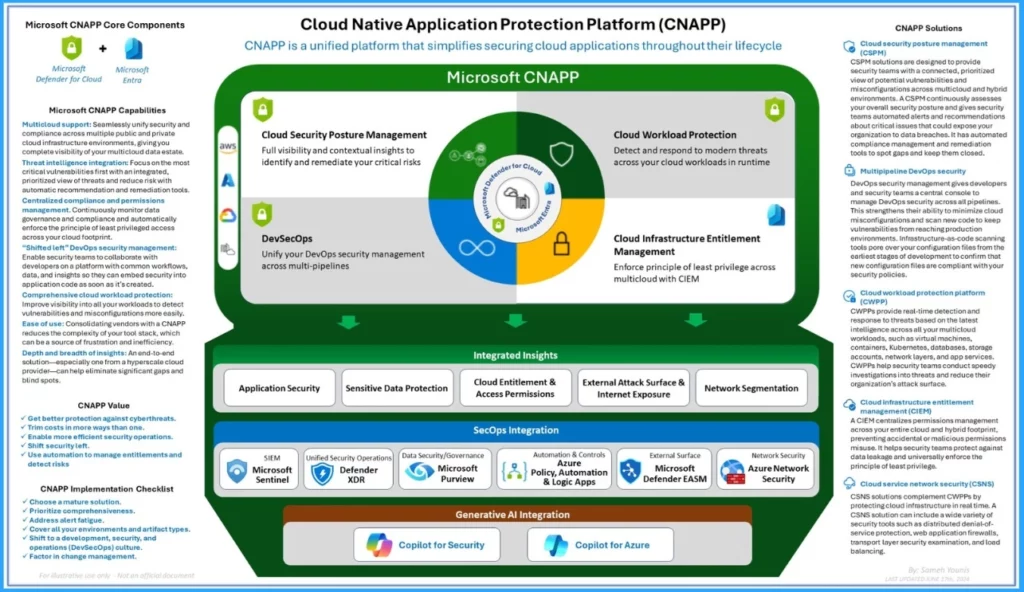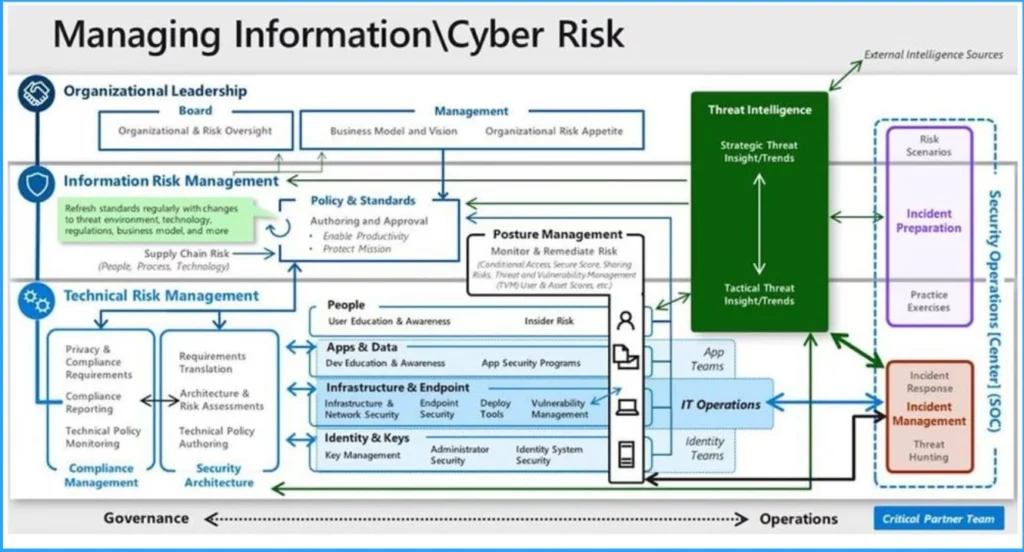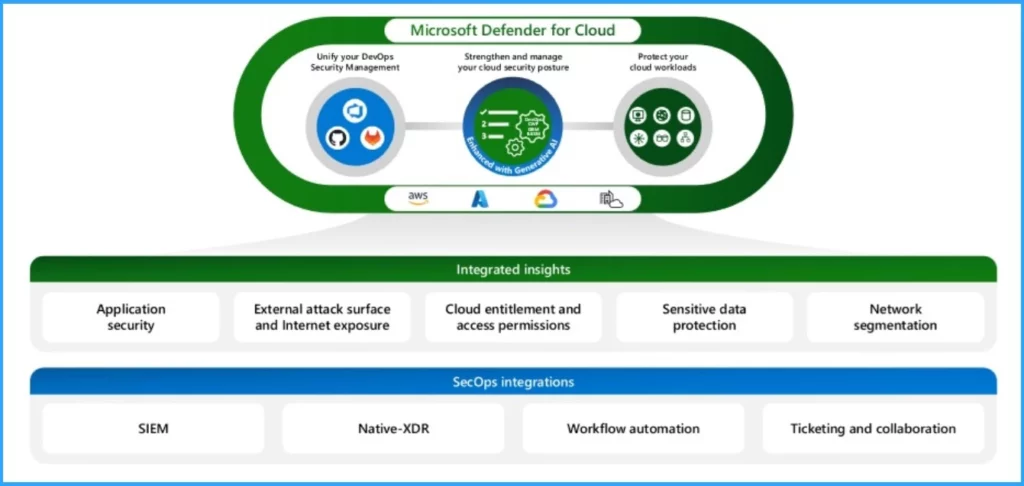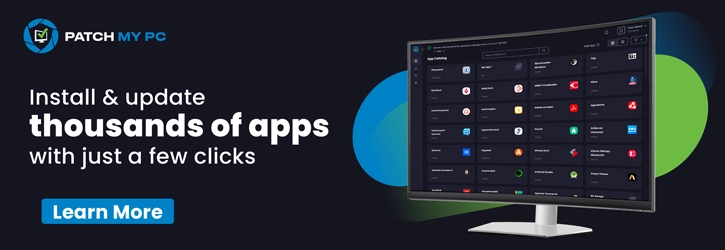Let’s discuss the Microsoft CNAPP Cloud Native Application Protection Platform Life Cycle. Microsoft CNAPP (Native Application Protection Platform) is a unified solution developed by Microsoft to ensure cloud security. CNAPP is dedicated to providing security in the earliest stages of the application development process.
The term CNAPP was first introduced by Gartner in 2021 to emphasize cloud security Strategies. As cloud platforms become more complex, securing every application throughout their lifecycle has become crucial. To achieve this, Microsoft introduced the CNAPP to simplify cloud Security.
CNAPP is a multi-security solution that provides comprehensive security and compliance capabilities. In this fast-changing world, cloud security is critical, and trojan attacks are severe. CNAPP can solve and protect cloud applications with its unique capabilities.
CNAPP is a versatile solution that ensures end-to-end protection for cloud applications. So, CNAPP is crucial for the cyber world. In this blog post, we can check more details of CNAPP and the different capabilities of this solution.

- Insights of How Copilot for Security Works
- What is the Security Compute Unit in MS Copilot for Security Context
Microsoft CNAPP Cloud Native Application Protection Platform Life Cycle
As mentioned, Microsoft introduced CNAPP to bring multiple cloud application security tools under a purpose-built umbrella. CNAPP simplifies embedding security into the application lifecycle while providing superior protection for cloud workloads and data.

Key Features of Cloud Native Application Protection Platform Life Cycle
There are many key features available on CNAPP. These key features help users protect their cloud applications easily. Let’s check the Key Features of the Cloud Native Application Protection Platform Life Cycle to achieve multiple cloud application security.
| Key Features | Details |
|---|---|
| Multicloud Support | It provides seamless security across the cloud environments. |
| Enhanced Protection | It has threat intelligence Integration and provides importance to automatic remediation. |
| Threat Intelligence Integration | It has threat intelligence integration and is important for automatic remediation. |
| Shift Left DevOps Security | Provide security at the beginning of the development of the application. |
| Comprehensive Cloud Workload Protection | Provide security at the beginning of the application development. |
| Ease of Use | It has threat intelligence integration and is important for automatic remediation. |
| Operational Efficiency | Provides Streamlined operations with improved alert prioritization. |
| Proactive Security | Capable of vulnerability detection in the development cycle. |
| In-depth Insights | Extensive visibility to close security gaps. |
| Automation | Automated risk detection and policy enforcement |
| Integration | Integration with SIEM (Microsoft Sentinel), Unified Security Operations (Defender XDR), Data Security and Governance (Purview), Automation (Azure Automation and Logic Apps), External surface posture (Defender EASM), and network security (Azure Network Security) |
| AI at the core | To analyze signals, and ensure rapid threat identification and response, Microsoft Defender for Cloud utilizes advanced AI. |
| Generative AI-Powered | summarize and analyze recommendations, delegate, and remediate recommendations and code by using Copilot by Security and Copilot for Security and Copilot by Azure |
| Cost Efficiency | It gives cost efficiency by a unified security platform |

Core Components of CNAPP
The Cloud Native Application Protection Platform Life Cycle includes some core components. These components help CNAPP protect cloud applications and infrastructure. The following are the Components of CNAPP.
- CSPM – Cloud Security Posture Management
- DevOps Security – Multipipeline DevOps security
- CWPP – Cloud Workload Protection Platform
- CIEM – Cloud Infrastructure Entitlement Management
1. Cloud Security Posture Management (CSPM)
The CSPM solution is designed to provide a prioritized view of misconfigurations across multicloud and hybrid environments. CSPM continuously provides alerts for users and recommendations about critical issues that could expose your organization to data breaches. It also has automated compliance management to find security breaches.

2. DevOps Security
DevOps Security allows developers and security teams a central console to manage DevOps security across all pipelines. It helps to strengthen the ability to minimize cloud misconfigurations and scan new code to keep vulnerabilities from reaching production environments.
3. Cloud Workload Protection Platform (CWPP)
CWPP provides real-time detection and response to threats based on the latest intelligence across all your multicloud workloads, such as virtual machines, containers, Kubernetes, databases, storage accounts, network layers, and app services.
4. Cloud Infrastructure Entitlement Management (CIEM)
Cloud Infrastructure Entitlement Management (CIEM) helps security teams protect against data leakage and universally enforce the principle of least privilege.
Conclusion
CNAPP is a single platform that unifies security-compliant capabilities and helps prevent, detect, and respond to cloud security threats. It will be the best choice for users to ensure the security of cloud applications.
Your organization can adopt the CNAPP component DevSecOps to simplify and speed up activities. Users can transform cloud security with Microsoft Defender for Cloud and Microsoft Entra.
- Methods to Break the Token Theft Cyber-Attack Chain on Entra
- What is Entra ID One Person One License Details
We are on WhatsApp now. To get the latest step-by-step guides, news, and updates, Join our Channel. Click here. HTMD WhatsApp.
Author
Anoop C Nair is Microsoft MVP! He is a Device Management Admin with more than 20 years of experience (calculation done in 2021) in IT. He is a Blogger, Speaker, and Local User Group HTMD Community leader. His main focus is on Device Management technologies like SCCM 2012, Current Branch, and Intune. He writes about ConfigMgr, Windows 11, Windows 10, Azure AD, Microsoft Intune, Windows 365, AVD, etc.
